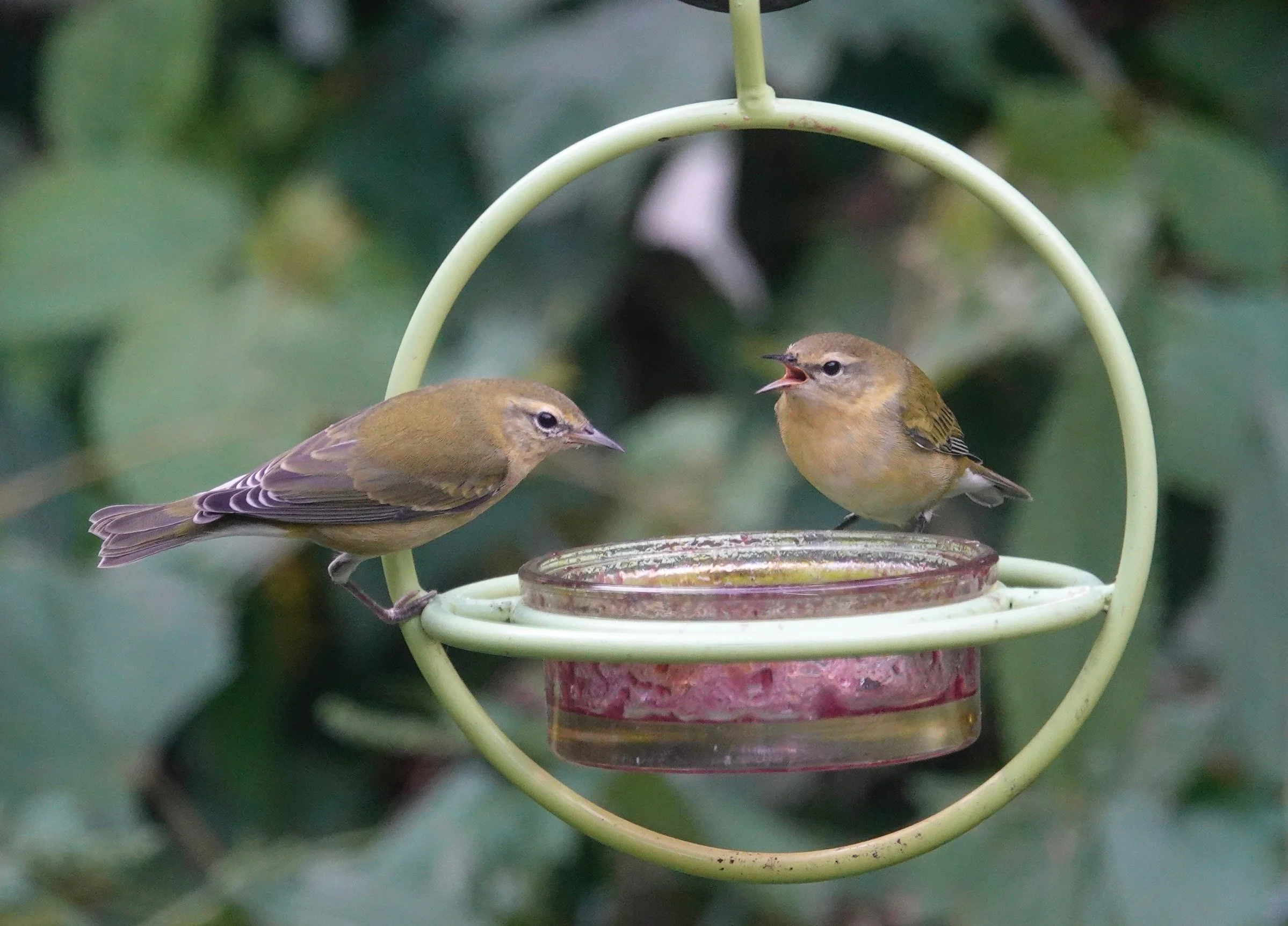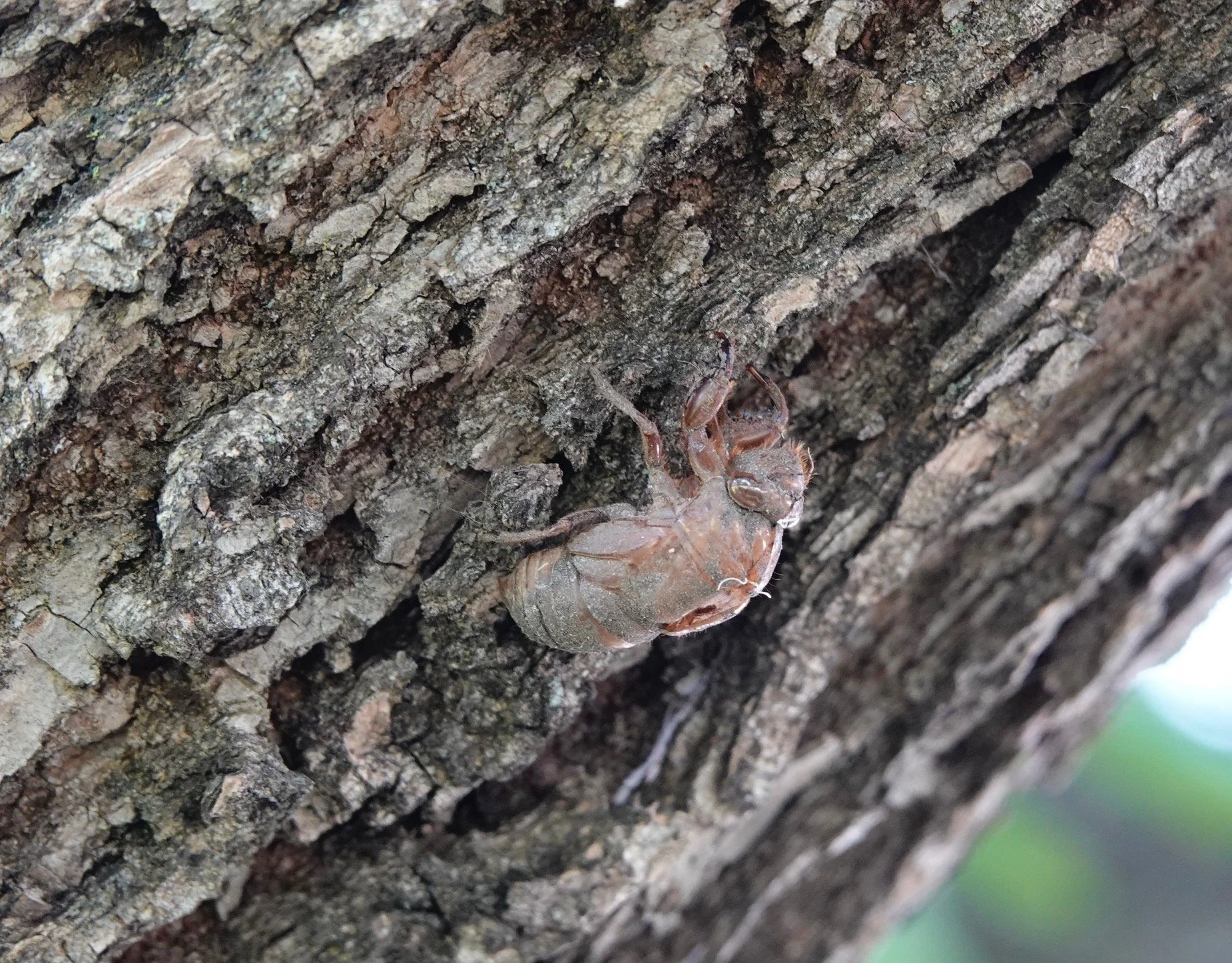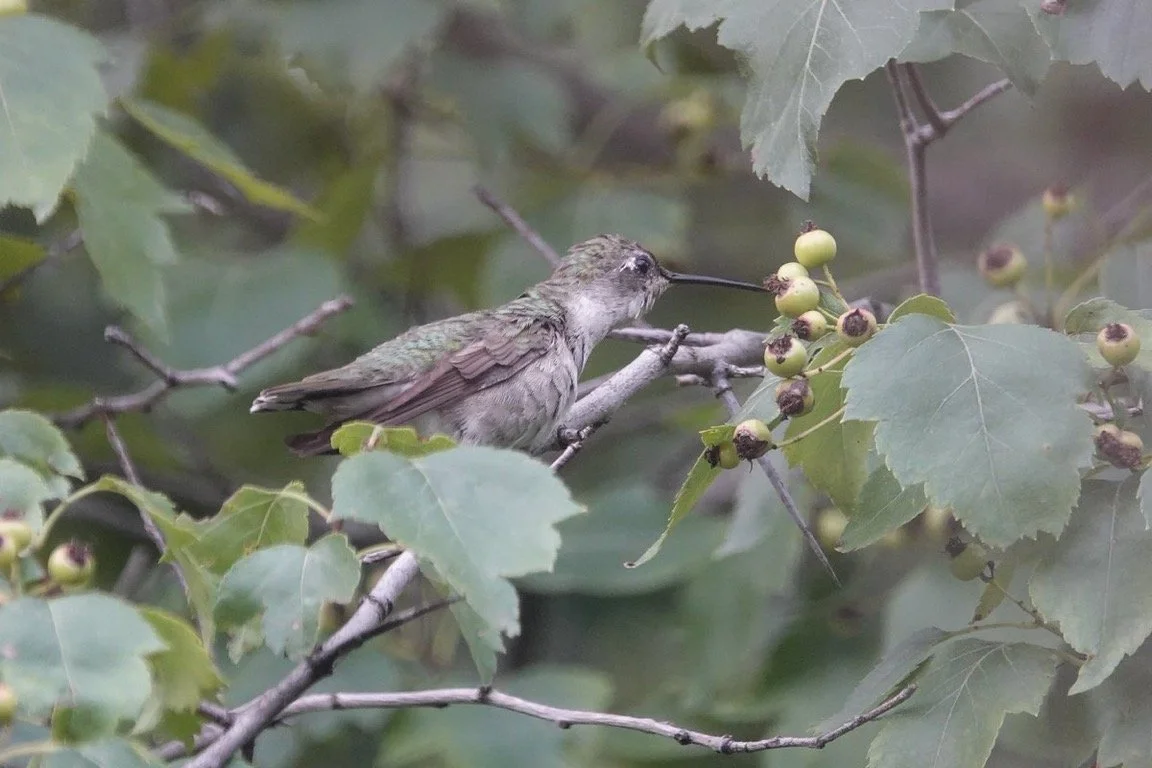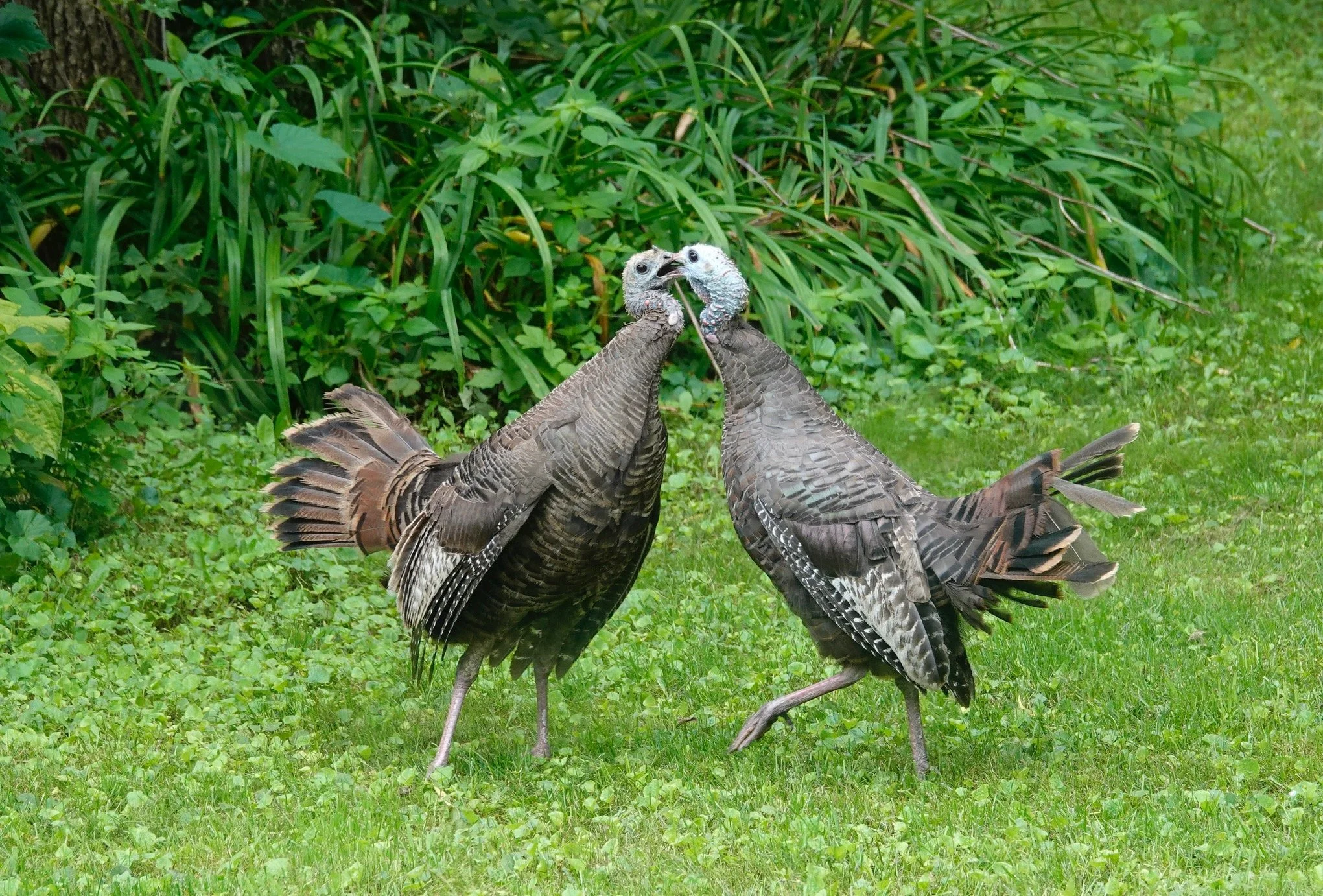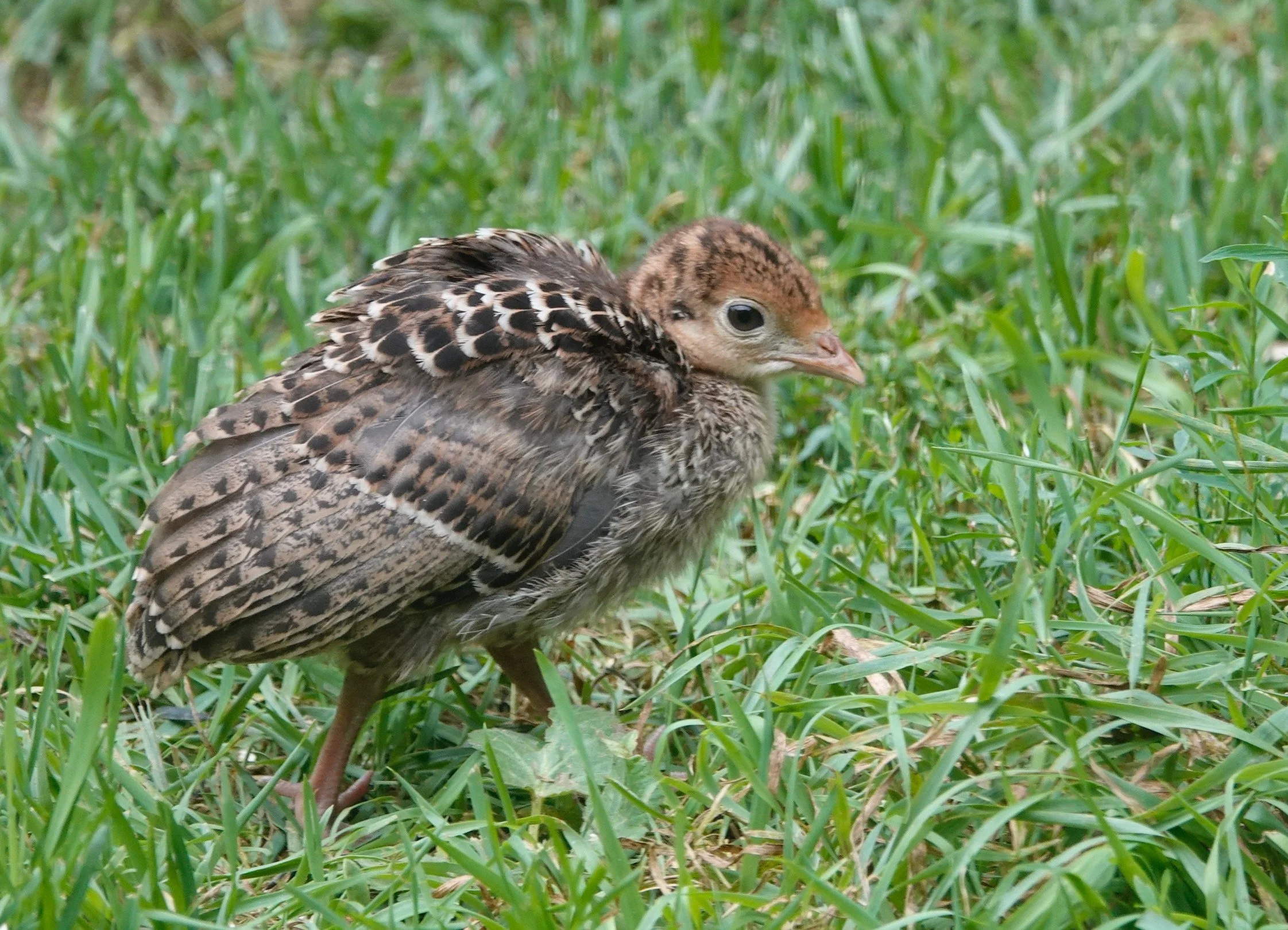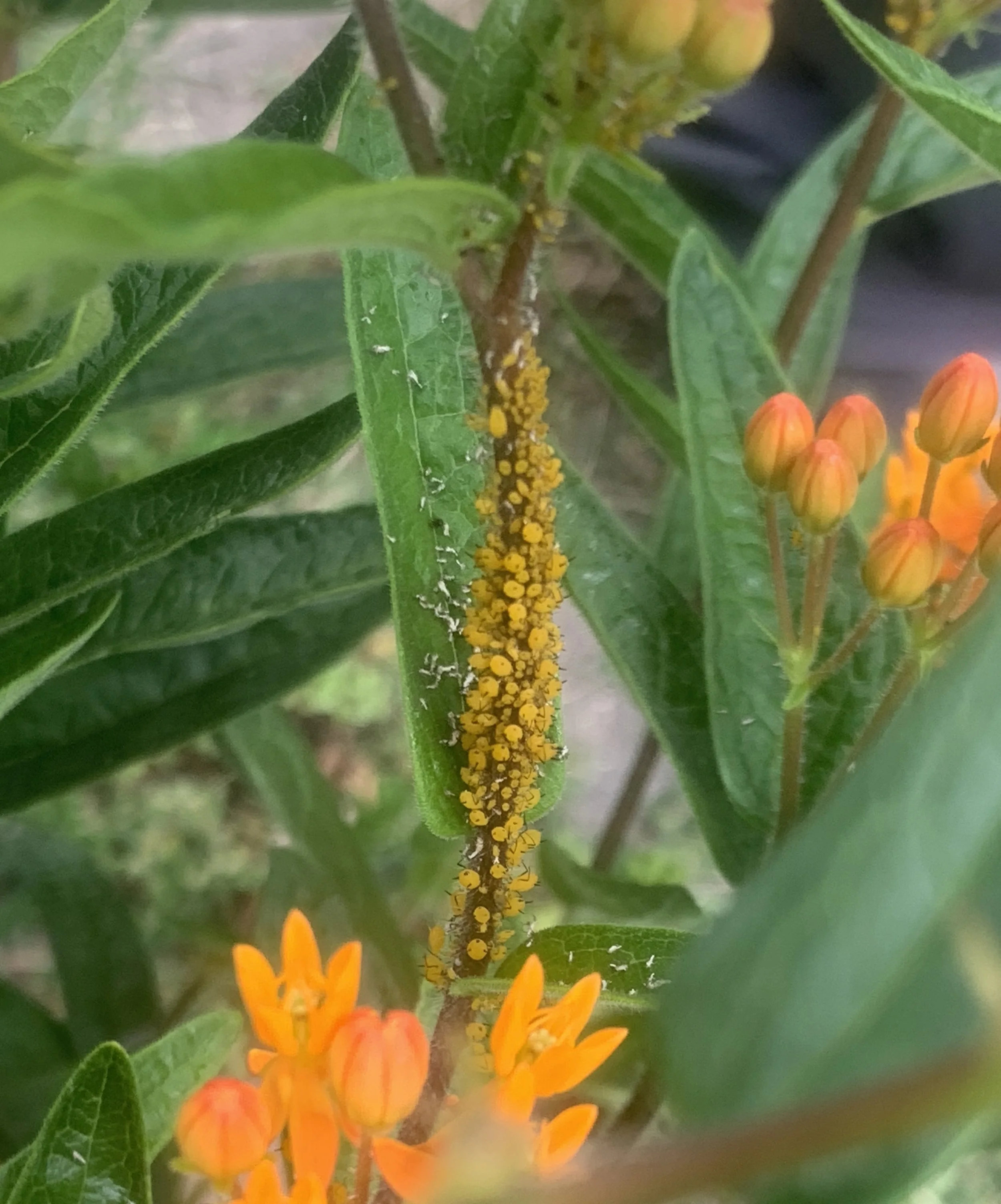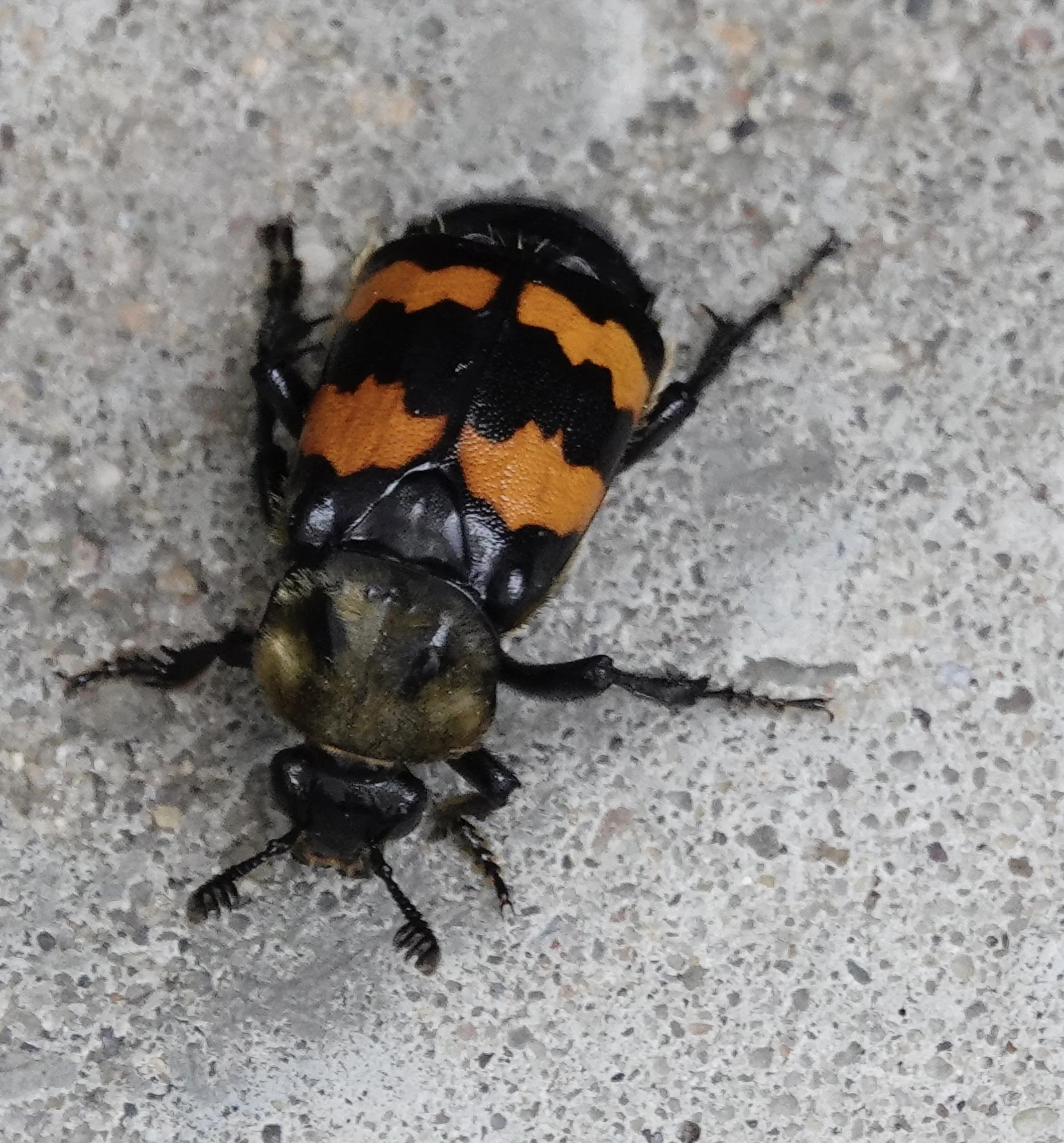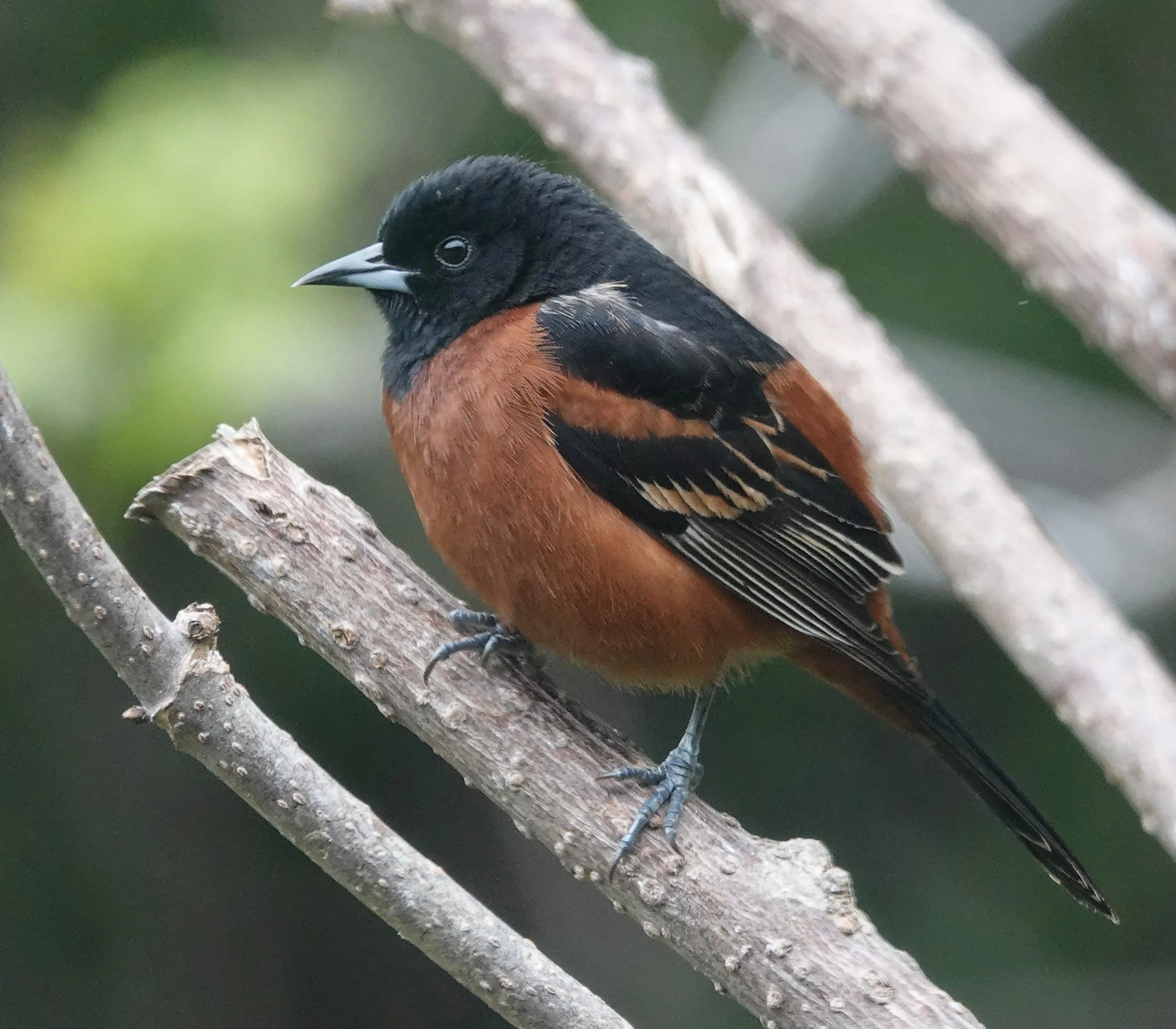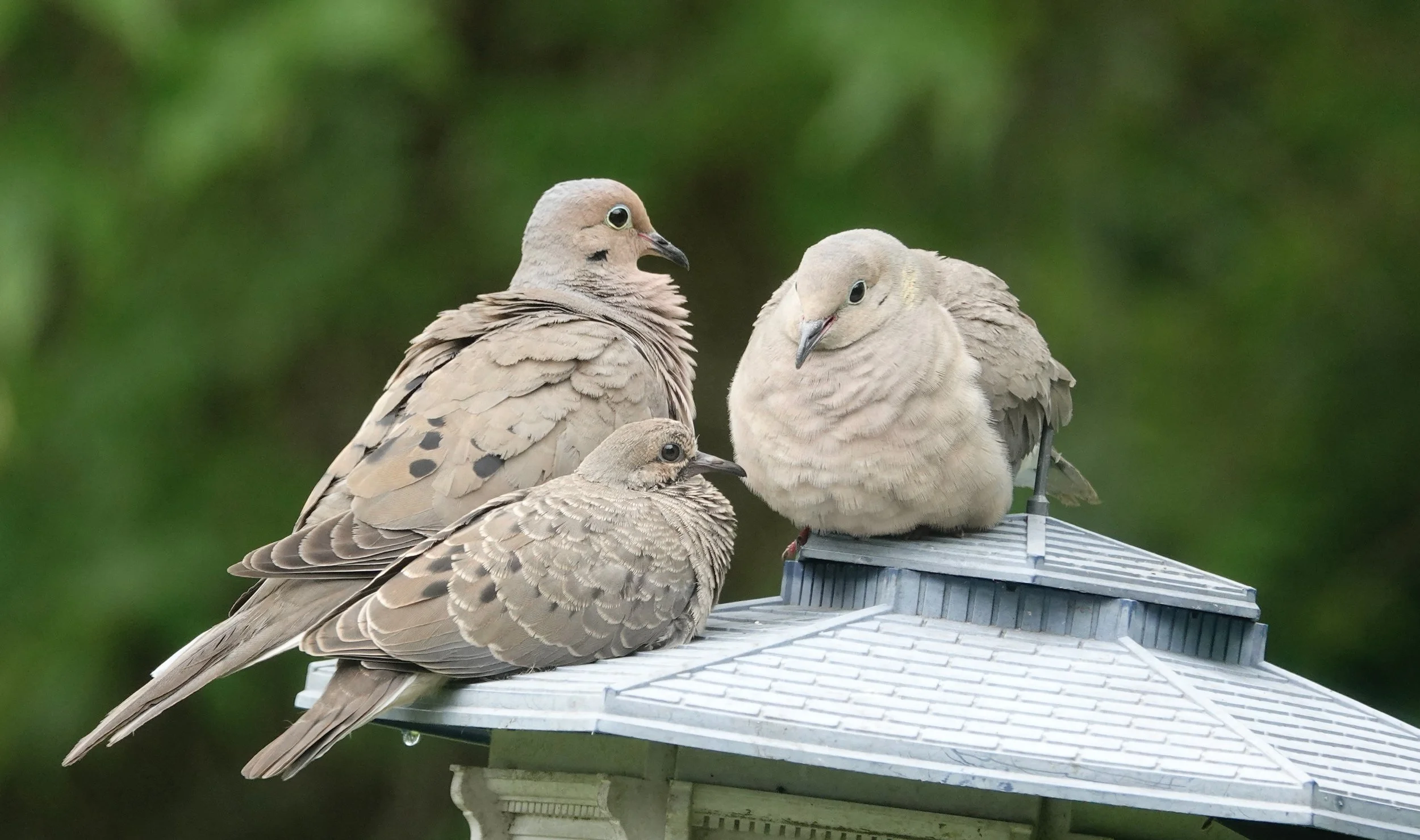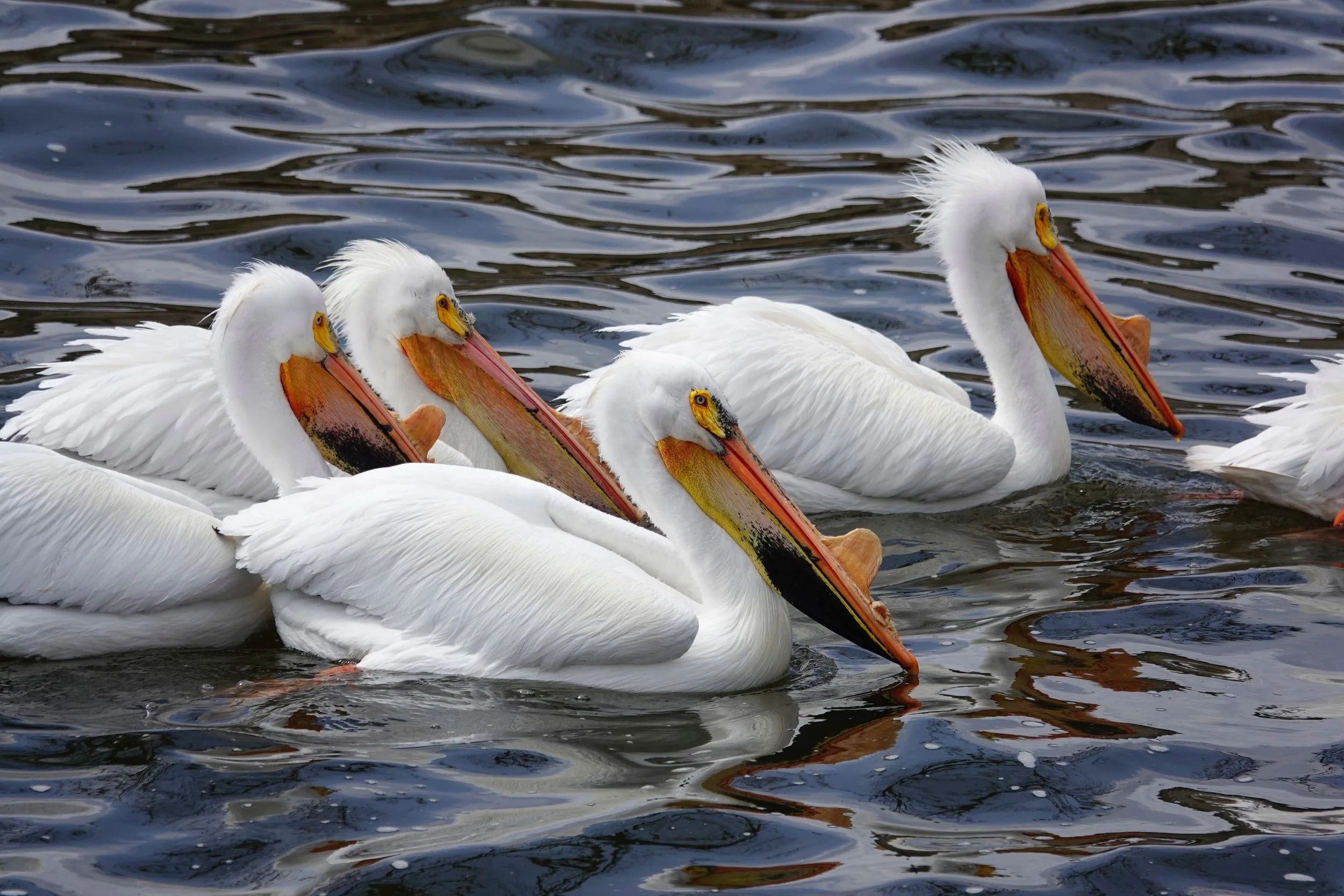Naturally
Ah, fall warblers. They are all atwitter.
The vastness of my world is revealed in the passage of these tiny birds. It’s a thrilling and memorable annual event for me.
I jumped on that teeter-totter between work and warblers. I look down at the work on my desk, and then I look out the window at the warblers.
Hummingbirds drink sugar water and chase others away from a chance of drinking sugar water.
I put out grape jelly in small amounts to prevent a bird from becoming mired in the sticky stuff. There are long lines to the feeders. This past week, I've watched Baltimore orioles, red-bellied woodpeckers, brown thrashers, house finches, gray catbirds, downy woodpeckers, rose-breasted grosbeaks, cardinals, robins and warblers (Tennessee, Nashville, yellow, Cape May and Blackburnian) dine on the jelly. I’ve never seen so many warblers feeding on the jelly. Tennessee warblers have been the most regular of the warbler chowhounds..
The bird waterer is at its busiest but somehow becomes busier.
Thanks to normal molts, I’m seeing balding blue jays. They should be on the brochure of the Feather Club for Jays. The Cornell Lab of Ornithology says many of those birds are juveniles undergoing their first prebasic molt, which produces the first winter adult plumage.
Enjoy every bird.
Q&A
“How can I tell a red oak tree from a white oak?” Red oak leaves have pointed lobes, whereas white oak leaves have rounded ones. A bur oak belongs to the white oak group. Squirrels prefer the sweeter acorns of the white oak.
“Are they ladybugs or lady beetles?” The terms ladybug and lady beetle are
interchangeable, although lady beetle is more scientifically accurate. All ladybugs are actually lady beetles because they aren't bugs at all. They are beetles.
“What seeds stick to me like those of burdock?” Burdock produces seeds covered in tiny hooks that catch on the fur of passing animals or socks of passing humans. This inspired George de Mestral to invent Velcro. There are devil’s beggarticks or devil’s pitchforks. Yellow avens have dry oval seed heads covered in hooks. Beggar’s lice stickseed, also called sticktights, have small globe-shaped nutlets with bristles. They’re called beggars because they want to hitch a ride.
“How do slugs, snails and snapping turtles spend the winter?” Slugs typically winter as eggs in protected sites in the soil or under plant debris, mulch or boards. When the weather is dry or cold, a land snail retracts into its shell and goes to sleep. A snail pumps as much water as possible out of its body and seals the opening of its shell with a film-like covering. It might glue itself to a leaf, rock or other object. Snapping turtles often congregate to hibernate below the ice, burying themselves in decaying vegetation and mud, or wedging under submerged logs. Observers have witnessed snapping turtles slowly moving through the water under the ice during winter. As with fish and plants, aquatic snails cannot survive if the pond freezes solid and a depth of 20-30 inches provides a safe haven.
“What is the best nectar for a hummingbird feeder?” Mix 1 part white table sugar with 4 parts water. I don’t always boil the water, but it helps the sugar dissolve. Don’t add red food coloring to entice hummingbirds. The red parts of feeders attract the birds’ attention. Don’t use honey, fruit juice, soda, sugar substitutes, syrups or brown sugar.
“How big is a hummingbird nest?” The ruby-throated hummingbird’s nest is around 2 inches across (the height of a business card) and 1 inch deep (the length from the tip of your index finger to the first knuckle). The spiderwebs used to build the nest are strong and flexible enough to allow for expansion.
“How many dragonflies are there in Minnesota?” There are an estimated 5,500 to 6,500 dragonfly and damselfly species in the world. In Minnesota, there are around 149 total species. Dragonflies belong to the class Insecta and the Order Odonata. Odonata includes both dragonflies and damselflies.
“Do phoebes reuse their nests?” Eastern phoebes frequently renovate and reuse old nests.
“Is ‘species’ pronounced SPEE-shees or SPEE-sees?” Both pronunciations are correct in the US. In the UK, they prefer SPEE-shees.
“What is the largest spider in Minnesota?” The fishing spider at 1 1/4 inches long; 3 1/2 inches long when legs are included. It’s brown with three chevron markings usually visible on the abdomen and has banded legs. Associated with ponds, swamps and slow-moving streams, it’s a predator of insects and occasionally tadpoles and small fish. Does not harm people.
Thanks for stopping by
“Most of us are scripted to think that life is a game and the purpose of life is to win. But the divine truth is that life is a gift and the purpose of life is to learn to love well.”—Brian Zhand.
“Don’t bother just to be better than your contemporaries or predecessors. Try to be better than yourself.”-William Faulkner.
Do good.
©️Al Batt 2024
A blue jay with a crewcut. Photo by Al Batt.
Tennessee warblers enjoying a dinner conversation. Photo by Al Batt.
Baltimore orioles beautify any day. Photo by Al Batt.
Exuviae is the technical term for the sloughed-off natural animal coverings such as the skins of snakes and the shed exoskeletons of insects or other arthropods. Most insects don’t leave their exuviae hanging around, but cicadas have piercing-sucking mouthparts, which prevents them from eating their exuviae, as do most insects with chewing mouthparts. Photos of cicada and its exoskeleton by Al Batt.
At the Henderson (MN) Hummingbird Garden.
Immature and female American Redstarts are often called “Yellowstarts.”
A ruby-throated hummingbird samples something in a hawthorn tree. Photo by Al Batt.


